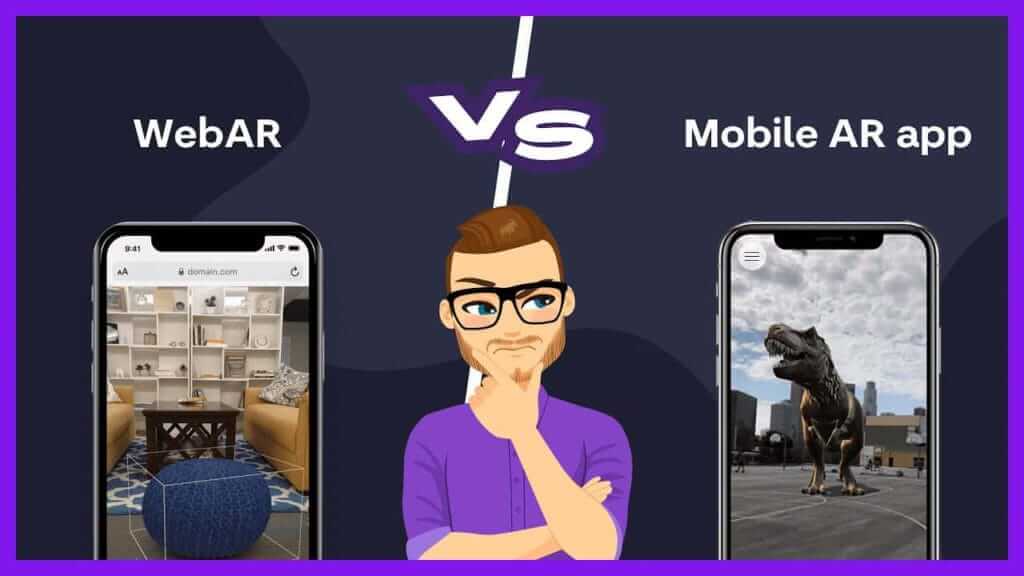Augmented Reality (AR) evolved originally from adding simple graphics to a range of experiences rendered in real time through a dedicated application (App). While Apps are the defacto standard, several companies are building platforms delivering AR experiences using native web browsers, termed WebAR.
At face-value, the only differentiating distinction is the decision to engage with AR through an App or a browser. This blog provides an objective comparison between both approaches.

WebAR vrs. Traditional App?
WebAR: Uniformity of Experience
The only distinct advantage of WebAR is the uniformity of the experience across all devices and operating systems. This allows marketers to target a larger, wider browser based audience with a short-term promotion and lower costs.
The Key WebAR Concerns
Where the simplicity of using WebAR is attractive, there are several limitations.
Firstly, and possibly the most important consideration. Given this is an evolving technology there is no agreed universal standard for a common delivery of the solution. Without a common standard, solutions are limited to work on a specific browser, limiting the potential consumer audience given not all consumers use the same browser. Further, any updates to the browser may impact the WebAR experience.
Another point of consideration is that WebAR relies entirely on downloading each experience as triggered. Limitations in file size, low bandwidth, data-plan restrictions etc., can greatly impact the end user experience.
This aside, WebAR certainly has its place and efforts will continue to shape and deliver a common agreeable standard similar to the agreed standards reached for web content.
Richer, Immersive Experiences Are Still The Domain of Native Apps
Despite the potential advantages as discussed, WebAR lags in terms of delivering highly immersive, high fidelity AR experiences.
Comparatively, AR Apps excel in terms of the features, interactivity, and engagement that can be created.
With an AR App, Brand owners and marketeers have greater control over which devices have access to content for the best experience. A further, major advantage of an App based solution is offering embedded AR content for a total offline experience.
Apps offer far richer user data and insights that help refine and improve future AR campaigns.
Native Apps facilitate building an engaged virtual community currently unavailable with WebAR. If planning a long term AR campaign or a customised experience, a dedicated App is the logical choice.
The Verdict
To clarify, the ideal choice of solution is based on your specific needs.
If looking to engage for a short-term to a very specific audience and browser, WebAR may be a good option. However, if looking to create a richer, more informative experience, more easily deployed an AR App is the better choice.
Dreemar have an extensive global client base across multiple market sectors, driven to stay innovative and lead AR technology development. We take pride in having a passionate team that can help guide your journey and assist in creating immersive visitor experiences in AR.
